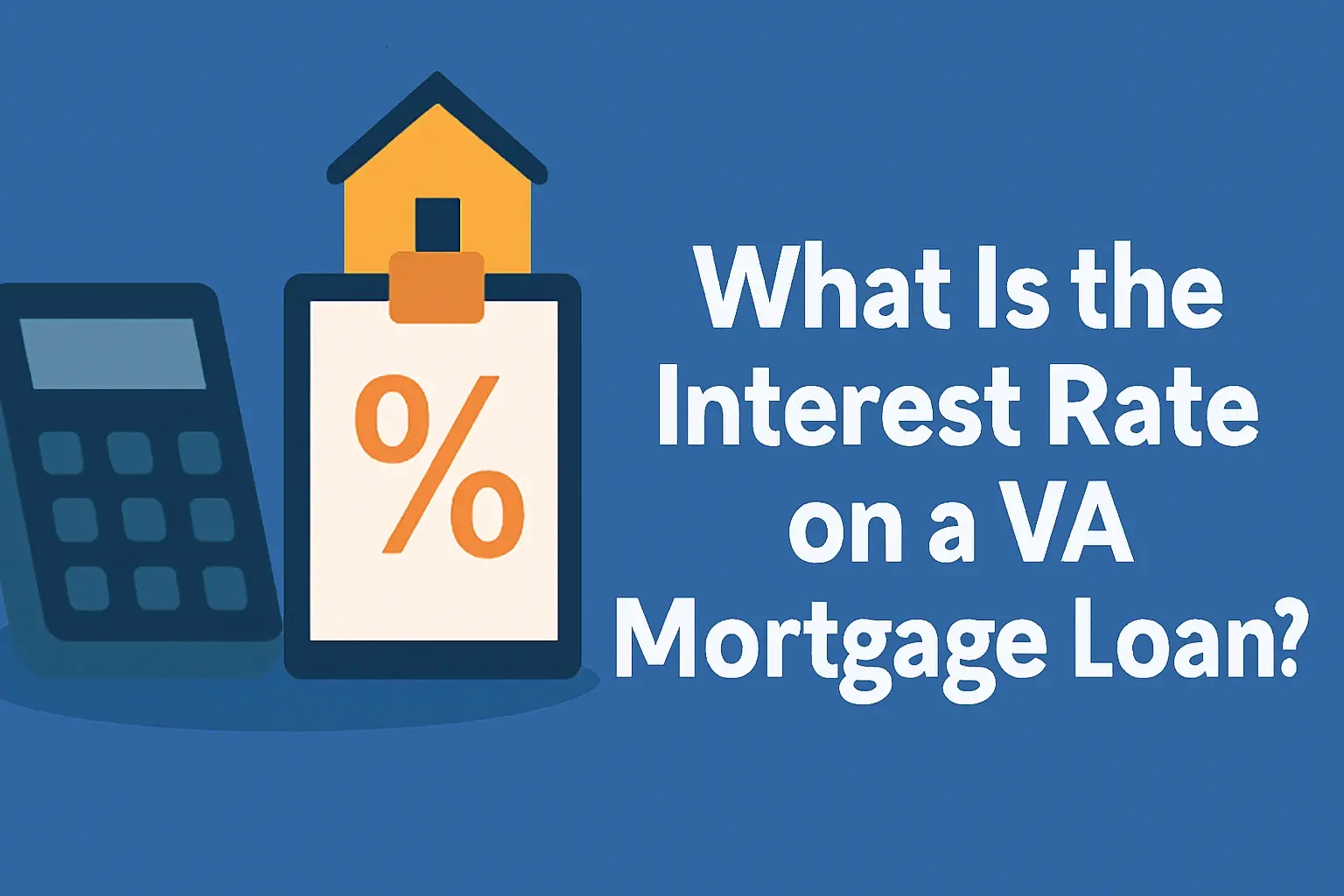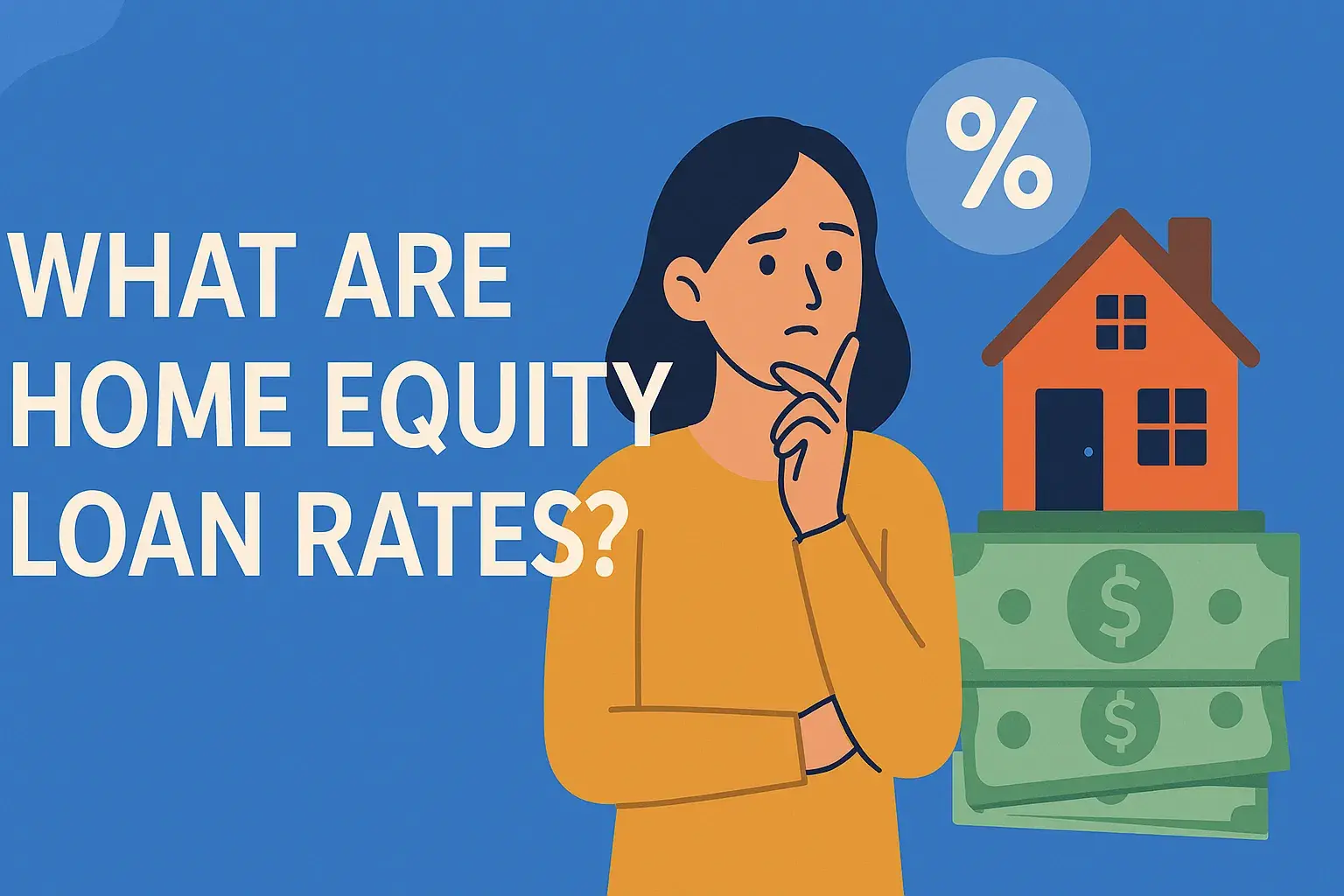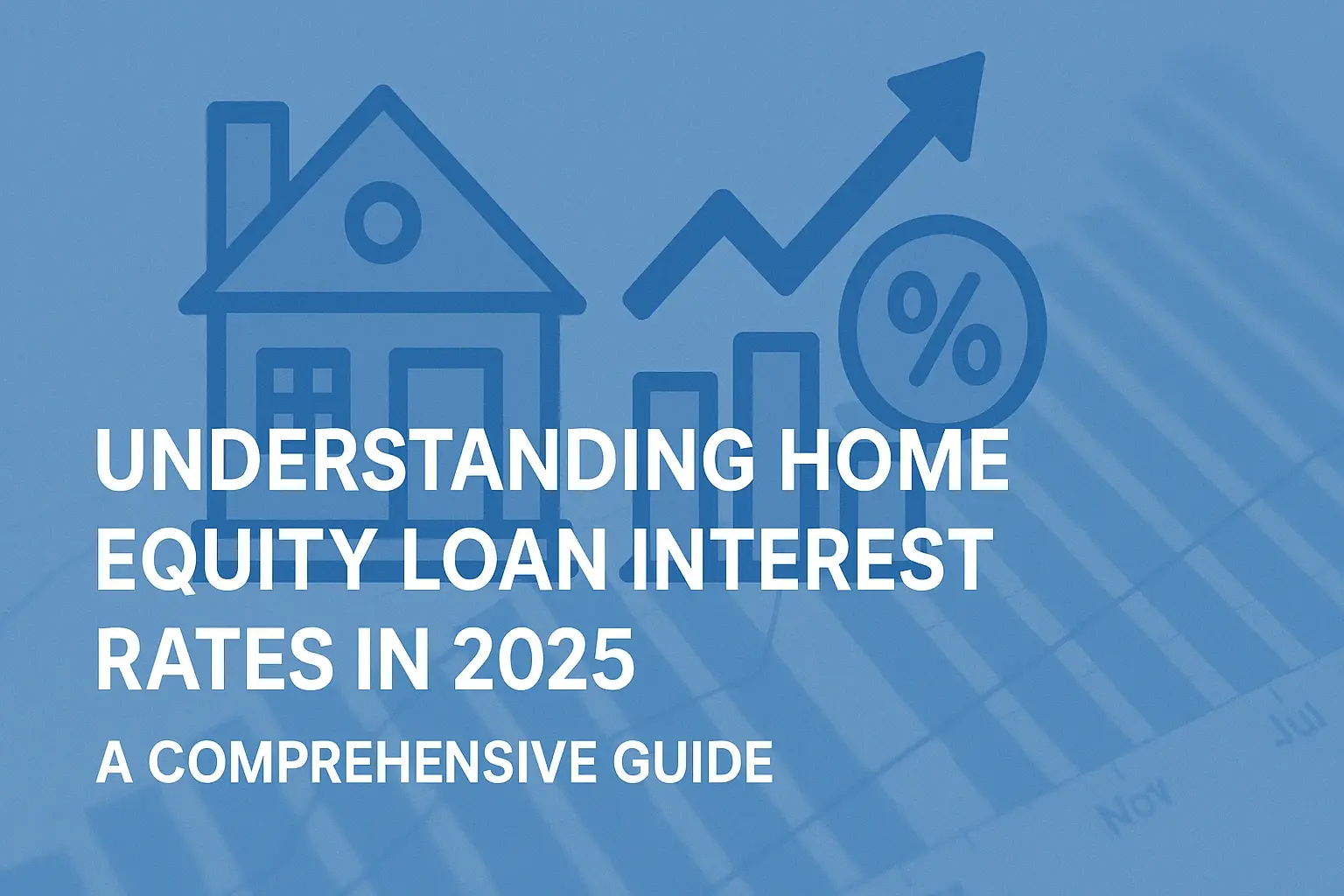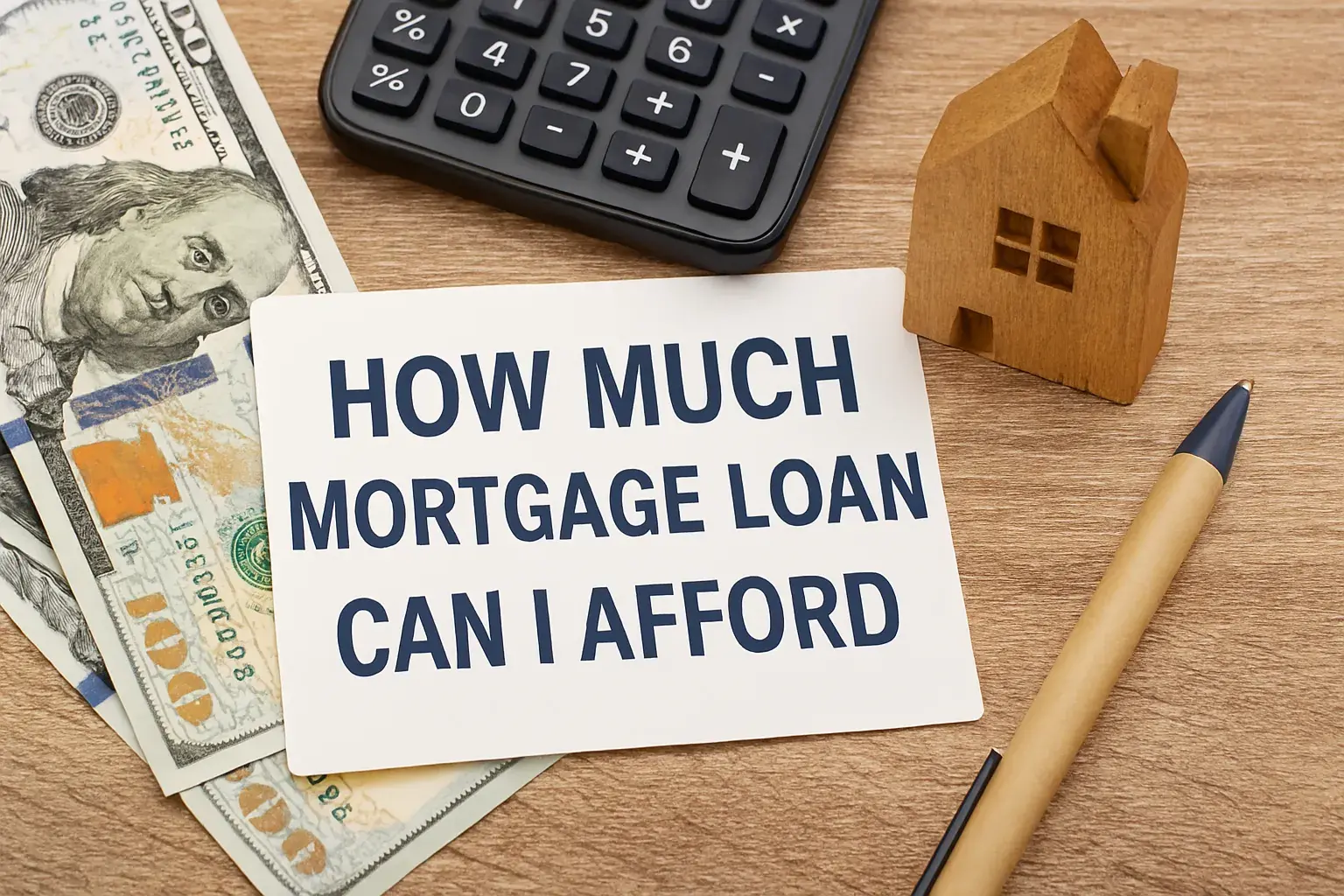-
Posted on: 21 Dec 2022
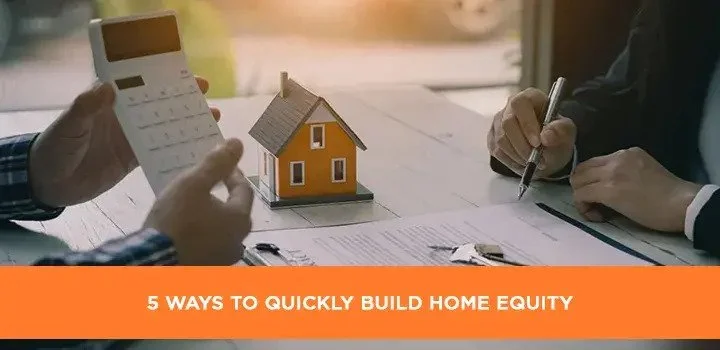
-
Unlock the potential of your home by rapidly building equity. This guide reveals five proven strategies to accelerate your home equity growth, transforming your property into a powerful financial asset faster than you thought possible. Start maximizing your investment today.
Understanding Home Equity: The Foundation
Before diving into strategies for building home equity quickly, it's crucial to grasp what home equity truly is and why it matters. Home equity is the difference between your home's current market value and the outstanding balance of your mortgage. For instance, if your home is valued at $500,000 and you owe $300,000 on your mortgage, you have $200,000 in equity. This equity represents your ownership stake in the property and is a significant component of your net worth.
Building equity is not just about increasing your net worth; it's about financial security and flexibility. A higher equity stake means you have more financial cushion, can potentially borrow against your home for other needs (like renovations or education) with better terms, and stand to gain more profit when you eventually sell your home. In 2025, with fluctuating interest rates and a dynamic real estate market, understanding and actively growing your equity is more important than ever for homeowners seeking financial stability and growth.
The primary ways equity is built are through two main mechanisms: paying down your mortgage principal and through property appreciation. While appreciation is largely influenced by market forces beyond your direct control, paying down your principal is an area where homeowners can exert significant influence. Strategies that focus on accelerating principal payments or increasing your home's value are key to quickly building this valuable asset. This guide will focus on actionable steps you can take to influence both.
Strategy 1: Accelerated Mortgage Payments
The most direct and reliable way to build home equity is by paying down your mortgage principal faster than the standard repayment schedule. While your monthly mortgage payment is typically structured to cover both principal and interest, a significant portion of early payments goes towards interest. By making extra payments specifically allocated to the principal, you can reduce the loan balance more rapidly, thereby increasing your equity at a faster pace. In 2025, with potential shifts in interest rates, understanding how to optimize your mortgage payments is a cornerstone of financial prudence.
The Power of Extra Principal Payments
Even small, consistent extra payments can make a substantial difference over the life of a loan. For example, adding an extra $100 to your monthly mortgage payment, specifically designated for principal, can shave years off your loan term and save you thousands in interest. The key is to ensure that these extra funds are applied directly to the principal balance and not just treated as an early payment of the next month's installment.
How to Make Extra Principal Payments Effectively
- Bi-Weekly Payments: Instead of making one full mortgage payment per month, divide your monthly payment by 12 and add that amount to each of your 12 monthly payments. Alternatively, consider making a half payment every two weeks. This results in 13 full monthly payments per year (26 half-payments), effectively adding one extra monthly payment annually. This strategy is simple to implement and can significantly reduce your loan term and interest paid. For a 30-year mortgage, this can shorten the term by about 5-7 years.
- Lump-Sum Payments: If you receive a bonus, tax refund, or any unexpected windfall, consider putting a portion of it towards your mortgage principal. Even a single lump-sum payment can make a noticeable dent in your loan balance and accelerate your equity growth. Ensure you communicate with your lender that this is an extra principal payment.
- Rounding Up Your Payment: If your monthly payment is, for example, $1,450, consider rounding it up to $1,500 and designating the extra $50 for principal. This small, consistent increase can add up over time.
- One Extra Monthly Payment Annually: This is perhaps the simplest method. Make one extra full mortgage payment each year, explicitly stating it's for principal reduction. Many lenders allow you to do this without penalty. Spreading this extra payment across the year (e.g., dividing it by 12 and adding it to each monthly payment) can make it more manageable.
Understanding Amortization Schedules
An amortization schedule shows how your mortgage payments are divided between principal and interest over time. In the early years of a mortgage, a larger percentage of your payment goes towards interest. By making extra principal payments, you effectively jump ahead on this schedule, meaning more of your future payments will go towards reducing the principal, thus building equity faster. For instance, a $300,000 mortgage at 6% interest over 30 years has a principal and interest payment of approximately $1,798.65. Making an extra $200 principal payment monthly could reduce the loan term by over 6 years and save nearly $70,000 in interest by 2025.
Potential Pitfalls and Considerations
It's crucial to confirm with your lender that extra payments are applied directly to the principal and that there are no prepayment penalties. Most standard mortgages in the US do not have prepayment penalties, but it's always wise to verify. Also, ensure that your extra payments are clearly designated for principal reduction. If not, they might be applied to your next scheduled payment, negating the equity-building effect.
Strategy 2: Strategic Home Improvements
While paying down your mortgage is a direct route to building equity, increasing your home's market value through strategic improvements is another powerful method. When your home appraises for more than its previous valuation, your equity increases by the difference, assuming your mortgage balance remains the same. The key here is "strategic" – not all renovations yield a positive return on investment. Focus on upgrades that are in demand and offer the best bang for your buck in 2025.
High-ROI Renovation Projects
Not all improvements are created equal when it comes to adding value. Research local market trends and what potential buyers in your area are looking for. Generally, renovations that enhance functionality, curb appeal, and energy efficiency tend to offer the best returns.
Kitchen and Bathroom Remodels
These are consistently ranked among the highest ROI projects. A modern, functional kitchen or a refreshed bathroom can significantly boost a home's appeal and perceived value. Focus on updating countertops, cabinets, fixtures, and flooring. Even a minor refresh, like new hardware and a fresh coat of paint, can make a difference.
Curb Appeal Enhancements
The first impression matters. Improving your home's exterior can dramatically increase its perceived value and attract more buyers. This includes landscaping, a new front door, updated outdoor lighting, fresh paint on the siding, and well-maintained walkways. According to industry reports for 2025, projects like adding a new garage door or updating the front entrance can yield returns of 90-100% or more.
Energy Efficiency Upgrades
With rising energy costs and a growing environmental consciousness, upgrades that improve energy efficiency are increasingly valuable. This includes installing new, energy-efficient windows and doors, upgrading insulation, installing a high-efficiency HVAC system, or even adding solar panels. These improvements not only make the home more attractive to buyers but can also lead to significant cost savings for the homeowner.
Adding Square Footage (Strategically)
While more complex and expensive, adding a bedroom, bathroom, or finished basement can significantly increase your home's value, especially if your neighborhood is characterized by smaller homes. However, ensure that the added space is proportionate to the rest of the house and the neighborhood's norms. For instance, adding a bathroom to a home with only one can be a game-changer.
DIY vs. Professional Renovations
The decision to DIY or hire professionals depends on your skills, time, and the complexity of the project. While DIY can save on labor costs, mistakes can be costly and may not add as much value as professional work. For projects requiring specialized skills or permits (like electrical or plumbing work), hiring a licensed professional is often the wiser choice to ensure quality and compliance, thereby maximizing the return on investment.
Getting an Appraisal Before and After
To accurately gauge the impact of your renovations on your home's value, consider getting a professional appraisal before starting major projects and again after completion. This will give you a clear picture of how much equity you've added. Many lenders will also require an appraisal if you plan to refinance or take out a home equity loan, so understanding your home's current appraised value is always beneficial.
Example: A homeowner in a suburban area decides to renovate their outdated kitchen. The project costs $25,000, including new cabinets, countertops, appliances, and flooring. Before the renovation, the home was appraised at $400,000. After the renovation, a new appraisal comes in at $440,000. If their mortgage balance remained at $250,000, their equity increased from $150,000 ($400,000 - $250,000) to $190,000 ($440,000 - $250,000), a $40,000 increase, effectively recouping $15,000 of the renovation cost through added equity.
Strategy 3: Tapping into Appreciation Wisely
Home appreciation is the increase in your home's market value over time due to factors like inflation, demand, and neighborhood development. While you can't directly control market appreciation, you can strategically leverage it to your advantage, indirectly building equity. This involves understanding how appreciation works and how to make informed decisions that capitalize on it, rather than being passive observers. In 2025, understanding the nuances of market appreciation is key to smart homeownership.
Understanding Market Appreciation Trends
Home values are influenced by a multitude of factors, including local economic growth, interest rates, housing supply and demand, and neighborhood improvements. In 2025, we're seeing continued interest in areas with good amenities, strong job markets, and desirable school districts. Monitoring real estate market reports for your specific area can provide insights into appreciation trends. Websites like Zillow, Redfin, and local real estate board reports are valuable resources.
Factors Influencing Appreciation in 2025
- Economic Growth: Areas with robust job markets and growing economies tend to see higher appreciation.
- Interest Rates: Lower interest rates generally make mortgages more affordable, increasing demand and driving up prices. Conversely, rising rates can cool the market.
- Supply and Demand: A shortage of homes for sale in a desirable area will naturally push prices up.
- Neighborhood Development: New infrastructure, businesses, and community amenities can boost property values.
- Homeowner Improvements: As discussed in Strategy 2, well-maintained and updated homes tend to appreciate more than neglected ones.
Leveraging Appreciation Through Refinancing
If your home has appreciated significantly, you might have built substantial equity. One way to leverage this is through refinancing. While refinancing primarily aims to secure a lower interest rate or change the loan term, it can also be used to tap into existing equity. A cash-out refinance allows you to borrow more than you owe on your current mortgage, receiving the difference in cash. This cash can be used for various purposes, such as home improvements, debt consolidation, or investments. However, it's crucial to remember that a cash-out refinance increases your mortgage balance, which in turn reduces your immediate equity. The key is to use the cash strategically to generate further wealth or improve your financial position.
When is a Cash-Out Refinance a Good Idea?
- For High-ROI Investments: If you can use the cash to fund home improvements that will add more value than the cost, or invest in something with a guaranteed higher return than your mortgage interest rate.
- Debt Consolidation: Consolidating high-interest debt (like credit cards) into a lower-interest mortgage payment can save money and improve your financial health, indirectly helping your equity position long-term.
- Emergency Fund: If you don't have a robust emergency fund, tapping into equity can provide a safety net, though this should be a last resort.
Caution: Always weigh the benefits against the costs. Refinancing involves closing costs, and taking on more debt means more interest paid over time. Ensure the long-term financial implications are favorable.
Home Equity Loans and Lines of Credit (HELOCs)
These are other popular ways to access your home's equity without refinancing your primary mortgage. A home equity loan provides a lump sum of cash with a fixed interest rate and repayment period. A Home Equity Line of Credit (HELOC) functions more like a credit card, allowing you to draw funds as needed up to a certain limit, typically with a variable interest rate. Both are secured by your home, meaning failure to repay can lead to foreclosure.
Strategic Use of Home Equity Products
- Funding Major Projects: Ideal for large, planned expenses like a significant home renovation, college tuition, or starting a business.
- Lower Interest Rates: Generally offer lower interest rates than unsecured loans or credit cards.
- Tax Deductibility (Consult a Professional): Interest on home equity loans and HELOCs may be tax-deductible if the funds are used to buy, build, or substantially improve the home securing the loan. Always consult a tax advisor.
Important Note: While these tools allow you to access your equity, they increase your overall debt burden. Use them judiciously and ensure you have a clear plan for repayment. They are tools to leverage existing equity, not a substitute for building it.
Strategy 4: Leveraging Rental Income
For homeowners with extra space, converting a portion of their property into a rental unit can be a powerful strategy for accelerating equity growth. Rental income can be used to make extra mortgage payments, cover property expenses, or even fund further renovations, all of which contribute to building equity faster. In 2025, the demand for diverse housing options, including short-term and long-term rentals, remains strong in many markets.
Short-Term Rentals (e.g., Airbnb, VRBO)
Renting out a spare room, guest suite, or even an entire property on a short-term basis can generate significant income, especially in tourist destinations or areas with high business travel. The income potential can be higher than long-term rentals, but it also requires more active management, cleaning, and guest communication.
Pros and Cons of Short-Term Rentals
Pros: Higher income potential, flexibility in personal use of the property, potential for guest reviews to build reputation.
Cons: Income can be inconsistent, requires significant time investment for management, potential for wear and tear, strict local regulations in some areas.Long-Term Rentals (e.g., Monthly Leases)
Renting out a room, basement apartment, or an entire property on a longer-term lease (e.g., 6-12 months) provides a more stable and predictable income stream. This is often less management-intensive than short-term rentals.
Pros and Cons of Long-Term Rentals
Pros: Stable, predictable income, less day-to-day management required, tenants often take better care of the property.
Cons: Lower income potential compared to short-term rentals, potential for vacancies between tenants, dealing with tenant issues (late payments, property damage).Using Rental Income to Build Equity
The most effective way to use rental income for equity building is to allocate a portion of it directly towards your mortgage principal. For example, if you generate $1,000 per month from a rental, and after expenses (property taxes, insurance, maintenance, utilities), you have $700 left, consider applying a significant portion of that $700 as an extra principal payment. This extra payment directly reduces your loan balance, increasing your equity faster.
Example Scenario (2025 Data):
Consider a homeowner with a $300,000 mortgage balance at 5.5% interest over 30 years. Their monthly P&I payment is approximately $1,702. They decide to rent out a basement apartment for $1,200 per month. After accounting for $200 in additional utilities, $100 in minor maintenance, and $50 in insurance increase, they net $850 per month. If they consistently apply this $850 as an extra principal payment each month, they could:
- Significantly shorten their loan term (potentially by 10-15 years).
- Save tens of thousands of dollars in interest over the life of the loan.
- Build equity much faster, turning their property into a more substantial asset.
This strategy requires careful financial planning, understanding local landlord-tenant laws, and budgeting for potential vacancies and repairs. However, the potential to accelerate equity growth and generate passive income makes it a highly attractive option for many homeowners.
Considerations for Rental Properties
- Local Regulations: Check zoning laws and rental ordinances in your area. Some municipalities have restrictions on short-term rentals or require permits.
- Insurance: You'll likely need landlord insurance, which differs from standard homeowner's insurance.
- Property Management: Decide if you'll manage the property yourself or hire a professional property manager.
- Tenant Screening: For long-term rentals, a thorough tenant screening process is crucial to find reliable renters.
Strategy 5: Smart Financial Planning & Debt Management
Building home equity isn't solely about mortgage payments or property value; it's also deeply intertwined with your overall financial health. Smart financial planning and effective debt management can free up funds that can be directed towards your mortgage, thereby accelerating equity growth. In 2025, with economic uncertainties, a robust financial plan is more critical than ever for maximizing your assets.
Budgeting and Saving Strategies
A detailed budget is the cornerstone of smart financial planning. By understanding where your money is going, you can identify areas where you can cut back and redirect those savings towards your mortgage principal. Even small savings, consistently applied, can make a difference.
Identifying Savings Opportunities
- Track Expenses: Use budgeting apps or spreadsheets to monitor your spending for a month or two.
- Reduce Discretionary Spending: Cut back on non-essential expenses like dining out, entertainment, or subscription services you don't use.
- Negotiate Bills: Contact service providers (internet, cable, phone) to negotiate lower rates.
- Shop Smart: Look for deals, use coupons, and buy generic brands when appropriate.
Once you've identified savings, allocate them directly to extra principal payments on your mortgage. This is a direct way to turn reduced spending into increased home equity.
Debt Management and Consolidation
High-interest debt, such as credit card balances or personal loans, can significantly hinder your ability to save and pay down your mortgage. The interest paid on these debts often outweighs any potential gains from home appreciation or even mortgage interest deductions. Prioritizing the elimination of high-interest debt is a crucial step in freeing up cash flow for equity building.
Strategies for Debt Reduction
- Debt Snowball Method: Pay off your smallest debts first while making minimum payments on others. Once a debt is paid off, add its payment amount to the next smallest debt. This provides psychological wins.
- Debt Avalanche Method: Pay off debts with the highest interest rates first, while making minimum payments on others. This method saves the most money on interest over time.
- Balance Transfers: Consider transferring high-interest credit card balances to a card with a 0% introductory APR. Be mindful of transfer fees and the APR after the introductory period ends.
- Debt Consolidation Loan: Obtain a new loan to pay off multiple existing debts. This can simplify payments and potentially lower your overall interest rate.
By reducing or eliminating high-interest debt, you not only improve your credit score but also free up substantial monthly income that can be redirected to your mortgage principal, thereby accelerating equity growth.
The Role of Emergency Funds
While it might seem counterintuitive, having a robust emergency fund is crucial for smart financial planning and, indirectly, for building equity. An emergency fund prevents you from having to tap into your home equity or take on high-interest debt when unexpected expenses arise (job loss, medical emergencies, major home repairs). A well-funded emergency fund (typically 3-6 months of living expenses) provides financial security and allows you to stick to your long-term equity-building strategy without derailing it.
Long-Term Financial Goals and Homeownership
Your home equity is a significant part of your overall financial picture. Integrating your home equity goals with other long-term objectives, such as retirement planning, college savings, or investment portfolios, is essential. For example, if your goal is early retirement, aggressively building home equity can provide a substantial asset to draw upon or a paid-off home that significantly reduces living expenses in retirement.
In 2025, financial resilience is key. By managing your budget effectively, tackling high-interest debt, and maintaining an emergency fund, you create the financial space needed to make those extra mortgage payments or fund value-adding home improvements that directly contribute to building your home equity rapidly.
Conclusion: Your Path to Accelerated Equity
Building home equity quickly is an achievable goal with the right strategies and consistent effort. By understanding the fundamental principles of equity, you can proactively influence your financial future. The five strategies outlined—accelerated mortgage payments, strategic home improvements, wise leveraging of appreciation, harnessing rental income, and smart financial planning—provide a comprehensive roadmap for homeowners in 2025 and beyond.
Prioritizing extra principal payments directly reduces your loan balance and saves you substantial interest over time. Investing in high-ROI home improvements increases your property's market value and your ownership stake. Thoughtfully accessing your home's appreciation through refinancing or equity products can fund further wealth-building opportunities, while rental income offers a powerful stream to accelerate debt reduction. Finally, robust financial planning and debt management create the necessary financial freedom to implement these strategies effectively.
Don't let your home equity grow passively. Take control today by implementing one or more of these actionable steps. Whether it's an extra $50 towards your mortgage each month, a well-planned kitchen renovation, or a detailed budget review, every step taken intentionally moves you closer to a stronger financial position and a more valuable asset. Start building your wealth through your home, faster.




